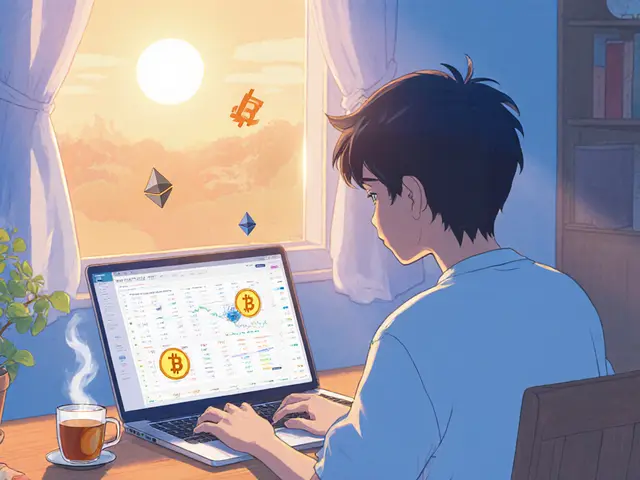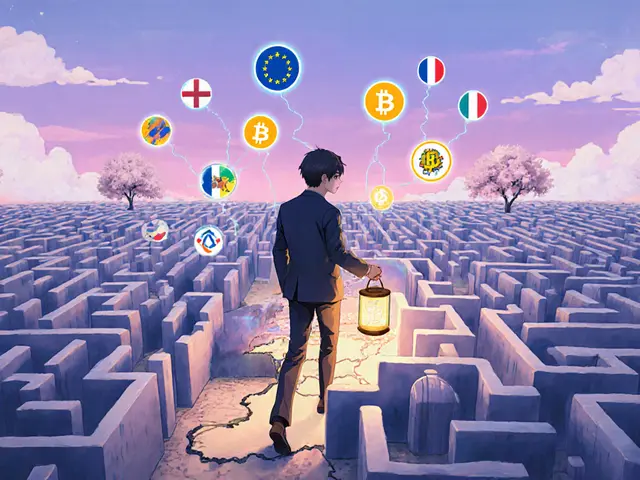Syrian Crypto Users: Trends, Tools, and Challenges
When talking about Syrian crypto users, individuals and groups in Syria who trade, hold, or develop digital assets. Also known as Syrian crypto enthusiasts, they face a unique mix of sanctions, limited banking options, and regional internet restrictions. To stay active they often rely on Virtual Private Network (VPN), an encrypted tunnel that masks IP addresses and bypasses geo‑restrictions. Access to reliable crypto exchanges, platforms where users buy, sell, and swap cryptocurrencies is another cornerstone, because without exchange liquidity the whole ecosystem stalls. And as global finance moves toward decentralized finance (DeFi), financial services built on blockchain without intermediaries, Syrian traders are looking for ways to earn yield, lend assets, and trade without trusting a centralized gatekeeper. All these pieces form a fragile but adaptable network that keeps crypto alive in a tough environment.
Regulatory pressure is the biggest driver of creativity here. Syrian authorities don’t have a clear crypto framework, so users watch neighboring countries for clues. When Iran tightens VPN detection, Syrian traders often copy those work‑arounds, swapping server locations or layering multiple VPNs to stay hidden. The same logic applies to KYC checks on exchanges: many opt for platforms that require minimal personal data or use P2P marketplaces where anonymity is higher. This balancing act between compliance and privacy fuels a growing underground community that shares tips on secure wallets, hardware devices, and best‑practice security hygiene.
Beyond staying online, Syrian crypto participants are eager to tap into global opportunities like airdrops and token sales. Verified airdrop programs, such as the recent Galaxy Adventure Chest NFTs, offer free tokens in exchange for simple tasks—ideal for users with limited capital. However, airdrop scams are rampant, so the community stresses checking contract audits and source code before claiming anything. Similarly, meme and community‑driven coins, from NEUROS to KEK, attract local investors looking for high‑risk, high‑reward plays. Understanding tokenomics, supply caps, and distribution mechanisms becomes crucial, especially when local fiat conversion routes are scarce.
Mining is another avenue, though electricity shortages and government restrictions make large‑scale operations tough. Some Syrian miners join overseas mining pools or rent hash power from cloud services, converting earned crypto back into local currency through trusted friends abroad. In regions where energy is cheaper, like parts of the north, small‑scale mining farms still sprout, but they must navigate new licensing rules that echo Kazakhstan’s recent crackdown after its energy crisis. These miners often diversify, staking tokens like Mantle Staked Ether (METH) to earn passive income while waiting for better mining conditions.
What You’ll Find Below
Below you’ll discover a curated list of articles that break down each piece of this puzzle. From detailed VPN survival guides for traders in sanction‑hit regions, to deep dives on specific exchanges like OccamX and btcShark, the collection equips you with actionable steps. There are also policy overviews that compare small‑nation crypto regulations, cross‑shard blockchain tech explanations, and practical guides on DeFi staking and NFT airdrops. Whether you’re a newcomer trying to set up a secure wallet or an experienced trader looking for the next high‑yield token, the posts ahead cover the full spectrum of challenges and opportunities that Syrian crypto users face every day.
By the end of this series you’ll have a clearer picture of how to protect your identity, choose the right platforms, and spot real value amid the hype. Ready to dive in? Let’s explore the resources below and turn those obstacles into stepping stones for your crypto journey.
24
How OFAC Sanctions Shaped Syrian Crypto Users in 2025
Explore how the 2025 OFAC sanctions relief reshaped Syrian crypto users, from new licensing to remaining restrictions, and learn practical compliance steps.
Latest Posts
Popular Posts
-
 What Is Collateralization in DeFi? A Clear Guide to How It Works and Why It Matters
What Is Collateralization in DeFi? A Clear Guide to How It Works and Why It Matters
-
 What is Bitgert (BRISE) crypto coin? Full breakdown of the blockchain, tokenomics, and real-world performance
What is Bitgert (BRISE) crypto coin? Full breakdown of the blockchain, tokenomics, and real-world performance
-
 What is Privix New (PRIVIX) Crypto Coin? Facts, Price, and Risks in 2025
What is Privix New (PRIVIX) Crypto Coin? Facts, Price, and Risks in 2025
-
 Xena Exchange Crypto Exchange Review: Professional Tools vs. Regulatory Risks
Xena Exchange Crypto Exchange Review: Professional Tools vs. Regulatory Risks
-
 What is LUXO (LUXO) crypto coin? The truth about the luxury authentication token
What is LUXO (LUXO) crypto coin? The truth about the luxury authentication token
Tags
- crypto exchange
- cryptocurrency
- crypto exchange review
- meme cryptocurrency
- blockchain
- cryptocurrency compliance
- Binance Smart Chain
- CoinMarketCap airdrop
- underground crypto Nepal
- crypto airdrop guide
- crypto staking
- Bitcoin mining Iran
- airdrop
- Ethereum staking
- GENIUS Act
- liquid staking
- cryptocurrency exchange security
- crypto
- crypto airdrop
- crypto regulations



